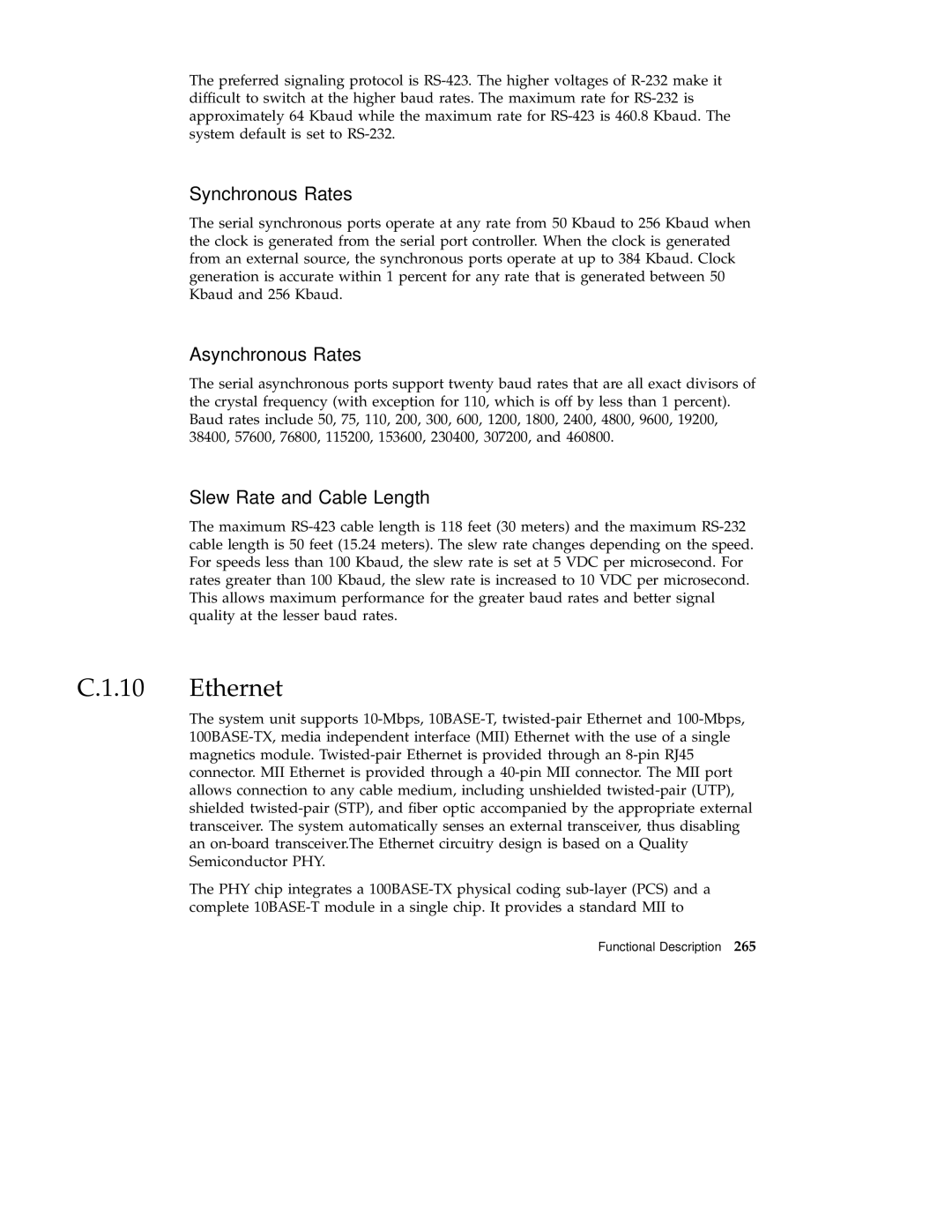The preferred signaling protocol is RS-423. The higher voltages of R-232 make it difficult to switch at the higher baud rates. The maximum rate for RS-232 is approximately 64 Kbaud while the maximum rate for RS-423 is 460.8 Kbaud. The system default is set to RS-232.
Synchronous Rates
The serial synchronous ports operate at any rate from 50 Kbaud to 256 Kbaud when the clock is generated from the serial port controller. When the clock is generated from an external source, the synchronous ports operate at up to 384 Kbaud. Clock generation is accurate within 1 percent for any rate that is generated between 50 Kbaud and 256 Kbaud.
Asynchronous Rates
The serial asynchronous ports support twenty baud rates that are all exact divisors of the crystal frequency (with exception for 110, which is off by less than 1 percent). Baud rates include 50, 75, 110, 200, 300, 600, 1200, 1800, 2400, 4800, 9600, 19200, 38400, 57600, 76800, 115200, 153600, 230400, 307200, and 460800.
Slew Rate and Cable Length
The maximum RS-423 cable length is 118 feet (30 meters) and the maximum RS-232 cable length is 50 feet (15.24 meters). The slew rate changes depending on the speed. For speeds less than 100 Kbaud, the slew rate is set at 5 VDC per microsecond. For rates greater than 100 Kbaud, the slew rate is increased to 10 VDC per microsecond. This allows maximum performance for the greater baud rates and better signal quality at the lesser baud rates.
C.1.10 Ethernet
The system unit supports 10-Mbps, 10BASE-T, twisted-pair Ethernet and 100-Mbps, 100BASE-TX, media independent interface (MII) Ethernet with the use of a single magnetics module. Twisted-pair Ethernet is provided through an 8-pin RJ45 connector. MII Ethernet is provided through a 40-pin MII connector. The MII port allows connection to any cable medium, including unshielded twisted-pair (UTP), shielded twisted-pair (STP), and fiber optic accompanied by the appropriate external transceiver. The system automatically senses an external transceiver, thus disabling an on-board transceiver.The Ethernet circuitry design is based on a Quality Semiconductor PHY.
The PHY chip integrates a 100BASE-TX physical coding sub-layer (PCS) and a complete 10BASE-T module in a single chip. It provides a standard MII to
Functional Description 265
